If you’ve ever played Dark Souls or Left 4 Dead, you’ve had a certain kind of feeling. You know the one. Low on resources, you trudge through an area toward a bonfire or a safe room that’s just around the corner, but as you do, you wonder if you should test fate or turn back. Do you face the enemy head on or regroup, saving your resources for another day?
Remnant: From the Ashes, a co-op third-person shooter from Darksiders developer Gunfire Games, does its best to recapture that heavy, creeping feeling. And, for the most part, it succeeds.
With a few friends firing alongside you, Remnant: From the Ashes is a blast from start to finish, and it offers plenty of replayability along the way.
Death Takes Root
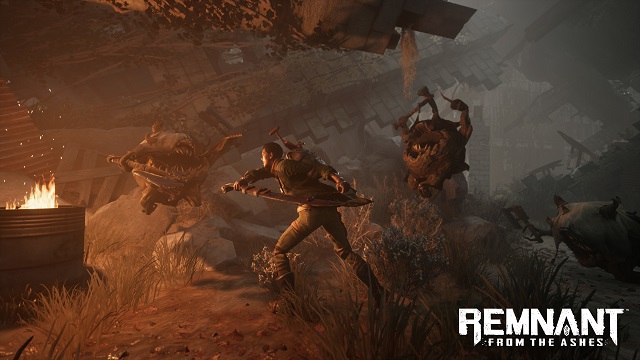
Remnant: From the Ashes is a bit of a Frankenstein’s monster as far as what it actually is.
On the surface, Remnant is a three-player, cooperative third-person shooter. It has randomly generated levels, but they essentially follow the same progression each time you play through. It also features more than a few callbacks to Dark Souls, which we’ll get into.
It all sounds a bit like someone said, “What do gamers like? OK, let’s just do all of that then. In a single game.”
Oftentimes, that can be a recipe for disaster. Somehow, though, Remnant: From the Ashes is anything but that. It’s extremely well-made and a joy to play. There’s great give-and-take between making you feel powerful and bashing you over the head with harder and harder enemies.
Somewhat cliched, you take control of a character after the world has essentially fallen apart. A race of monsters called the Root has invaded Earth and destroyed much of humankind, leaving crumbling cities and a few desperate survivors clinging to life.
Survival is your goal, but finding the source of the Root and how to save the planet is something that you may be able to achieve along the way.
Soul Remnants
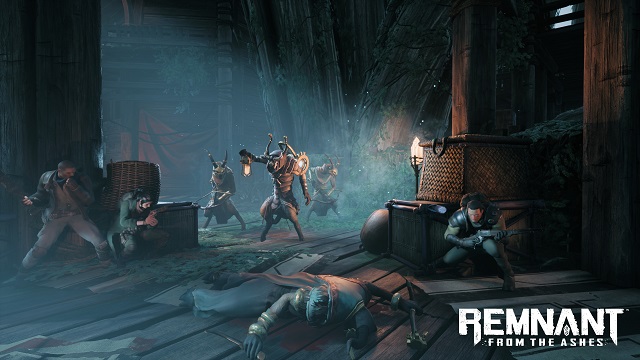
It won’t take you long to see the influence of Dark Souls on Remnant: From the Ashes. Your movement is similar, although a bit quicker and less clunky than when trekking around Lordran, and you have a few different dodges and attacks at your disposal, too.
Approach a red, floating crystal and have a seat; it will heal your character, replenish your ammo, and serve as a fast-travel point. It will also bring back every enemy you’ve killed.
No bonus points for guessing what lies beyond the doorway encased in fog.
If you’ve played Dark Souls, you’ll feel right at home with Remnant: From the Ashes. However, the game itself plays quite differently. It’s familiar, but not a copy.
The central difference is that, in Remnant, you’re equipped with guns. You have a melee weapon, a pistol, and a “long arm,” usually some variation of a hunting rifle or shotgun. Swapping between weapons is immediate, and learning to quickly assess a situation and what weapon you should use is key to surviving.
Deadly Foes
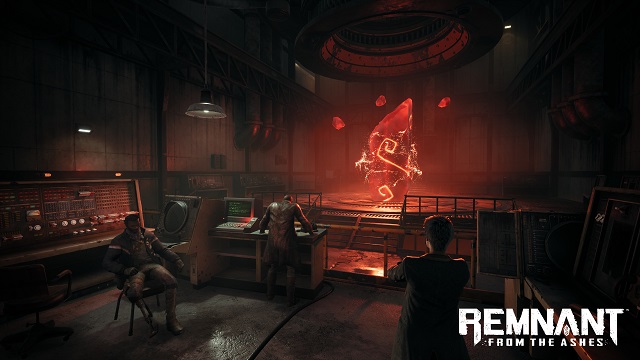
The other area that Remnant: From the Ashes might draw some comparisons to Dark Souls lies in its difficulty. Especially solo, this is a tough nut to crack. Regular enemies are easy enough when isolated or even in small groups. It’s just enough to make you overconfident.
Then, a swarm of them will drop from the ceiling, surrounding you. What’s that? You’re also bleeding now? And an elite foe just entered the fray? You’re going to have to restart at your last crystal, I’m afraid.
These types of deaths will happen frequently, but they rarely feel undeserved. Remnant rewards you for playing cautiously and improvising according to your situation.
Early on, you encounter little goblin-type creatures in some of the dungeons you come across. With a sweeping melee weapon, I found myself wading into groups of up to 10 foes at once, swinging a hammer and watching them fly backwards. However, if I caught a glimpse of a disease-causing kamikaze enemy coming around the corner, I would quickly move out of melee range and start blasting from afar.
It’s something that represents the perfect level of adjustability at play here; “commit to your strategy but be ready to change on the fly.” You learn very early on to use the third-person camera to your advantage, swiveling back and forth as soon as you start the animation for a melee swing.
Locating more dangerous foes is critical, especially when you hear an auditory cue indicating that an elite has appeared. If they aren’t tackled properly, you will be trapped and killed almost immediately.
Stay Awhile, and Listen
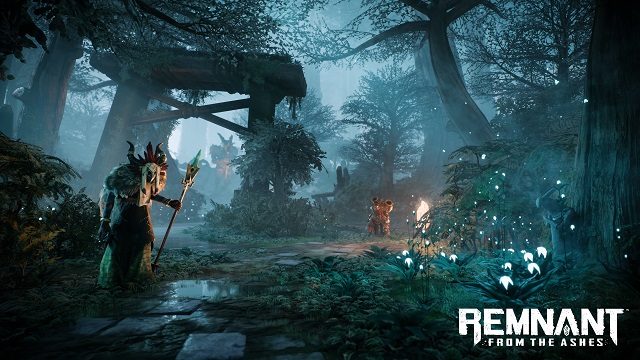
Even though it looks totally different, another game that Remnant: From the Ashes calls to mind is Diablo. The dungeons you come across, loot you find, and bosses you fight are semi-random, and they are drawn from a pool each time you start a new game.
The first time walking through the first area, you might come across a sewer dungeon with a giant creature wielding a curved blade as the boss. Reroll the world, and you might find the same dungeon (with a slightly different map) guarded by a gigantic sorcerer. Play through a third time, and there might not be a side dungeon in the first area at all, but instead, a very similar sorcerer is guarding a dungeon in the third area.
That idea of familiarity while exploring the unknown can backfire, but it can also lend almost infinite replay value when done well. It is difficult to tell just how much content is locked away in different playthroughs and difficulty settings, but Remnant: From the Ashes seems like a game that will stay fresh even on multiple playthroughs, provided you can eventually skip the boring tutorial.
More importantly, though, it also brings up another wonderful part of the game: cooperative mode.
The Family that Slays Together
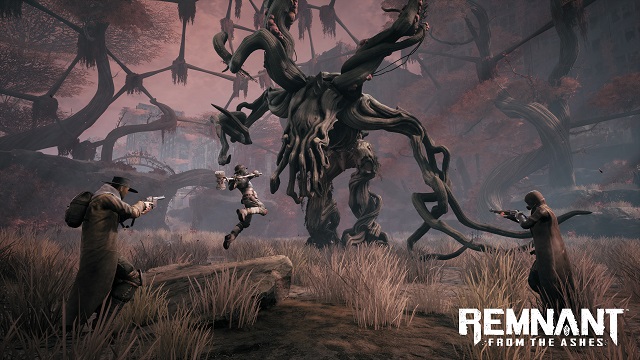
You can tackle Remnant: From the Ashes as a solo experience, but it’s really made to be played with two friends. You can find a game with a few randoms, or set yours to “Friends Only,” letting people on your contact list drop in and out of your game as they see fit.
Friendly fire is on, and strategy becomes even more important when you start slinging multiple shotguns. If one member of your team goes down, the other two need to decide if they want to push forward to reach the next checkpoint or hightail it back and retry.
As you kill more enemies and gather more items, you will incrementally improve your character. Max out your armor and health and wade into the middle of fights with your hammer swinging. Pump all your resources into a shotgun and watch foes fall in a single blast. Build up a healing ability and max out a long rifle.
There are so many different ways you can approach things in Remnant. But again, you have to adapt.
Certain traits only open up for characters after killing a certain boss or clearing a certain area; if a specific boss area or boss isn’t in a playthrough, you’ll have to reroll the world to try to find it. Before long, you’ll have multiple characters rolled. Each of these will have certain specialties and weaknesses, which you’ll parse through as you try to figure out who to bring on the next expedition.
The difficulty spikes and the ability to jump in and out of games with different characters lead to far more strategizing than they initially seem. This is the type of game where you could spend hours just thinking about the best ways to approach certain challenges.
Bang Bang
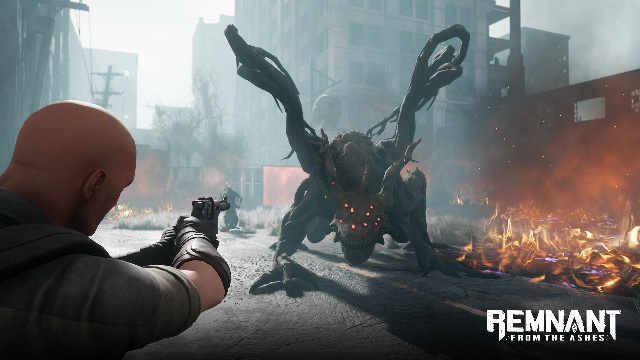
Pros:
- Tons of viable strategies and approaches
- Very difficult, but fair
- Replayable
- Simple but intuitive fighting
Cons:
- Could grow stale
- Generally generic enemies, environments, and presentation.
Ignore the fact that Remnant: From the Ashes sounds like an AI did a madlib to come up with the title. Ignore the somewhat odd, generic design choices, too such as when characters randomly quip during combat but never speak to each other.
Overlooking such things, you realize that Remnant: From the Ashes is fantastic. If you’ve got a couple of friends looking for a strategic shooter challenge, this is a no-brainer. If you want a new Dark Souls-esque game to take on, here’s your chance.
Provided the community for this game stays strong, this is one that the developers could keep adding to. Remnant could continue to grow and evolve for years to come — it’s that good.
There’s really something here for everyone, despite it initially looking a bit uninspired. Look past that, and you’ll find a pretty amazing experience here, whether you’re playing on your own or with friends.
[Note: A copy of Remnant: From the Ashes was provided by Perfect World Games for the purpose of this review.]

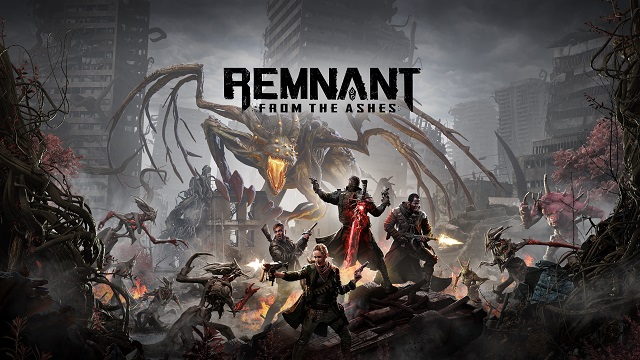





Published: Aug 19, 2019 01:17 pm